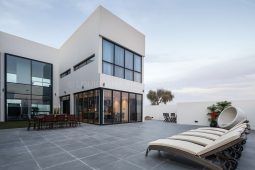Use LR’s New Landscape Mask for Ultra-Precise Edits (VIDEO)
Today’s video tutorial from the PHLOG Photography YouTube channel demonstrates the power of Lightroom’s recently introduced Lightroom Selection mask that represents a big leap in functionality and precision. As you’ll see, this new feature will transform image quality, and it’s super easy to use.
In fact, we encourage you to download the sample Raw file in the description beneath the video so you can follow along with the simple steps as they’re explained. Christian Mohrle is the perfect person for the job as he’s not only a globally acclaimed landscape photographer but an expert Lightroom instructor as well.
As always, Mohrle begins with several global adjustments to improve his image as much as possible before demonstrating the selective masking enhancements responsible for the ultimate transformation. He’s working with a nicely composed (but flat and dark) alpine scene with imposing peaks surrounding a small lake.
The first step is opening Lightroom’s Basic panel and changing the profile from Adobe Color to Adobe Standard which cuts overall contrast for more flexibility later in the process. He then carefully increases overall exposure, shadows and blacks. Mohrle continues by bringing down highlights to accentuate details in the bright sky.
Other preliminary adjustments include refinements to contrast, white balance, vibrance, texture, and dehaze. As you can see with Mohrle’s side-by-side comparison, the enhanced image is already a noticeable improvement over the original.
The fun part now begins by selectively targeting different areas within the frame using Lightroom’s timesaving Landscape Selection mask to achieve a perfect balance of tints, tones, contrast and sharpness with just a few clicks. He patiently demonstrates every step required, and you’ll definitely want to add this effective trick to your everyday Lightroom workflow.
And be sure not to miss our earlier tutorial featuring an accomplished Canadian pro who demonstrates how to bring dull landscape images to life with a framing technique that introduces a dynamic sense of compositional “flow.”




